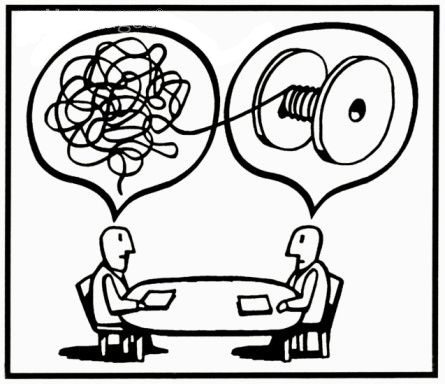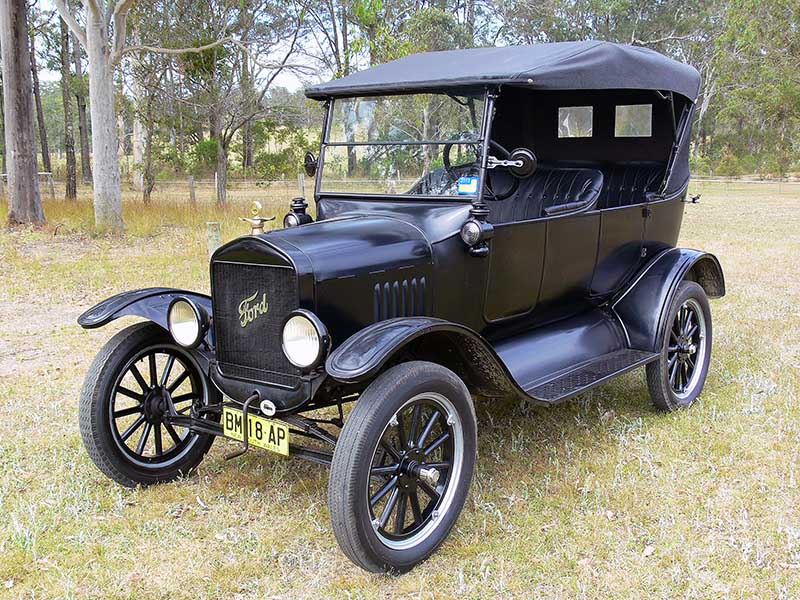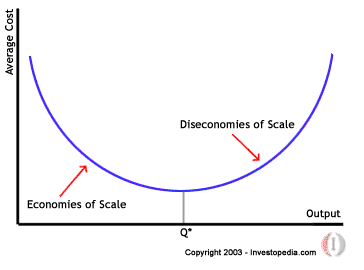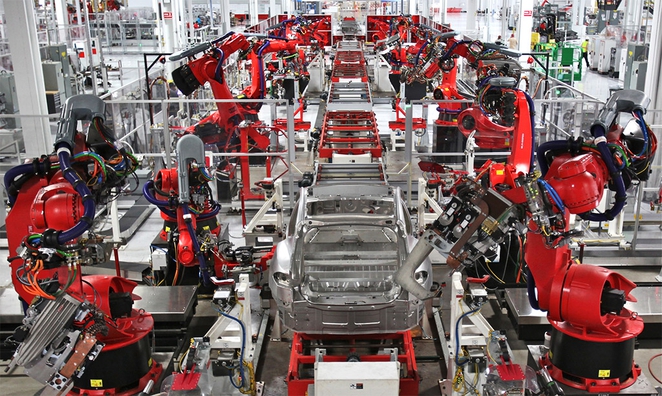I’ve had many constructive conversations with people about a ‘way of thinking’ regarding the relationship between those helping people (value creating) and those enabling this to happen (value enabling).
I wrote this up in a two-part post, which is linked here:
- Part 1: Autonomy – Autonomy Support – Autonomy Enabling
- Part 2: The problem of changing from ‘this’ (Control) to ‘that’ (Autonomy)
In addition to these two posts, I often use an analogy1 of a supermarket shelf to assist me in explaining the desirable inter-connectedness between those helping clients, and those (tasked with) enabling this.
Now, whilst every analogy is limited2, humanity has derived great value in using them. So this post is my attempt at writing down my ‘supermarket shelf’ analogy for others to ponder and play with.
Here goes…
So, how does a physical supermarket shelf work?
A simple diagram to assist:
In pulling according to their needs, the customer determines:
- whether what’s available is suitable for their needs (ref. autonomy);
- whether to try a product;
- what they think about the product once they’ve used it; and
- what’s missing from the selection (ref. not engaging/ going elsewhere)
In observing the customer, the supplier uses this as feedback to determine:
- which products are being selected, and therefore need restocking (ref. capacity);
- what new products to develop and test (ref. experimentation); and
- which products to improve or discontinue (ref. learning)
Note that the customer decides what combination of products goes in their basket (i.e. what selections work for their needs) …no matter how unexpected these may appear to the supplier.
The supplier’s role is to (safely) enable the selection, whilst providing knowledge to the customer as to what they are selecting and how to get the best out of it.
…and what doesn’t happen?!
The supplier DOES NOT decide what products to put into the customer’s basket.
The supplier DOES NOT decide whether the product worked out for the customer.
In short, the supplier DOES NOT control the customer. Rather, they aim to understand and enable them.
The analogy with People-centred services
If a social system wants to truly help people (its clients) then it will achieve this through autonomy support (rather than attempts at control).
The following diagram applies the supermarket analogy to a social system by using the roles defined within Part 1: Autonomy – Autonomy Support – Autonomy Enabling:
THE big point within this analogy is that ‘the centre’ (i.e. those removed from the client relationship) DOES NOT determine what services a given ‘client – helper working alliance’ is provided with/ can access.
Rather, their role is one of enablement: to ‘stock the shelves’ with a full range of useful tools that will assist, to ensure that it is clear and easy as to how to get the best out of these tools, and to constantly monitor and improve what’s available.
The ‘client – helper working alliance’ decides what combinations to pull and when to pull them as they progress on their relational journey to a better client life.
As set out within an earlier post on Vector Measurement, each client is unique, and their situation complex…so the journey will be about iteratively working alongside them according to what emerges.
This would be the opposite of putting people into a tiered model of services…and moving them up these tiers as things deteriorate (see below on this).
Clarification as to why the shelf is required
You might think “Yes! I agree…we need to get the (attempted) centralised control out of the equation!!” As such, you might be wondering why the helper (the ‘front line’ worker) even needs the centre.
Well, they do…but in a different way than has become the norm.
The helper needs to focus on the client – who they are, what’s going on for them, why this is so, what they need to move forwards.
The helper doesn’t have the time, capability, and resources to develop the host of necessary tools to help. Instead, they need to rely on others to enable them. NOT to dictate to them or refer onwards to…but to focus expertise where it is required.
Example: a client might want/need help in getting an appropriate job. Their helper would really like to be able to pull useful tools like:
-
-
- careers advice with respect to a client’s strengths and experiences
- knowledge as to what’s available to help develop a client in desirable directions (e.g. education courses, work experience opportunities…)
- knowledge of the local recruitment agencies, their specialisations, and who/ how to contact
- guidance on how to write a good CV, and some templates to get the client going
- interview coaching/advice
- financial assistance with logistics (e.g. transport, clothing…)
- …
-
All of these things would be very useful for the client & helper to have available to them, to pick and choose. It would be mad for each helper to have to design their own.
Conversely, none of this is the ‘centre’ dictating specific responses when a client’s attributes fit certain criteria, such as ‘you need to attend this work seminar, take part in this course/ programme, apply for these available roles, reapply for this benefit, …move from service tier x to service tier y’.
We could find lots of other examples (e.g. in health, education, corrections…), and the point would be the same. The client and their helper are on a journey. The service design needs to enable them, not attempt to categorise and control them.
What has become the conventional norm?
i.e. why is it necessary for me to have to write this post?
The current norm in many large service organisations is to adopt a centrally designed tiered model of services. Such a design involves multiple tiers of escalating service support.
A customer typically starts at ‘tier 0’, where the aim (from the organisation’s point of view) is for the customer to self-solve their needs (#digital).
‘Tier 1’ usually involves the need to ‘talk to a person’ but these ‘generalist’ processors are only allowed and/or equipped to answer the very basic needs.
‘Tier 2’ involves escalation to ‘specialists’ (people who may be able to help absorb some aspects of a client’s instance of variety)
…and we may go up to ‘tier n’ according to how specialised we choose to design.
The thinking is that such a model is cost-efficient (ref. front office – back office).
What’s not seen, let alone appreciated, is that such a design causes huge waste (and therefore cost) and significant client distress:
- of people steadily progressing up the tiers because the one before couldn’t meet their needs:
- particularly between tiers 0 and 1 (“I tried online but…)
- and again, between tiers 1 and 2 (“sorry, I can’t help with that. I’ll refer you onwards to…)
- of the wasted time and effort involved in managing this transferring of people between tiers (including the recording, and then deciphering of the notes in the system)
- of people not being able to access obvious and immediate help that could avert things getting worse (“sorry, your situation isn’t bad enough yet to access ‘tier 2’. Go away until you can show that ‘the wheels have really fallen off’ ”)
- of people getting ‘stuck in the system’ (“I can’t help with your actual underlying needs…but I can put this ‘sticky plaster’ over it”)
- of things getting worse for people as these transfers occur (“My initial problem was x…but now it’s morphed into 3x, y and z!”)
- of the confusion between those working within the various tiers (e.g. tier 2 getting frustrated with tier 1: “why did you do that for/to them? They’re my client!”)
- of the disengaged workforce who, confined to their allocated service tier, aren’t allowed to develop and use their capability to actually help the clients before them. They aren’t ‘helpers’ (as per the supermarket analogy). They are merely ‘processors’ (according to a centralised design).
If you operate such a system design, you could go and look (#studyyoursystem) …and see all of this. You probably won’t believe it until you do.
In summary
There’s a paradigm shift between attempting to efficiently handle volumes of events (transactional mindset), and effectively helping people move forwards (relational mindset).
The ‘tiered services’ model is focused on events and efficiency…causing yet more events to occur.
The ‘autonomy – autonomy support – autonomy enabling’ model is focused on journeys and effectiveness… leading to stability and independence.
The source of the analogy
I like to make clear how I got to my (current) thinking. Three stimuli for this post:
- In the 1950s Taiichi Ohno (Toyota production system) saw photos of American self-service supermarkets showing products arranged on shelves, available to be selected by customers as and when they required them.
He marvelled at how customers chose exactly what they wanted and how much of it, and then at how the products were replenished (Japan didn’t have self-service supermarkets at that time).
This led to Ohno and his colleagues devising the pull system of production (the opposite of the conventional push), and tools such as Kanban cards to convey the necessary information.
- In the 1970s Jan Wallander (Handelsbanken) set out a system whereby the bank’s central services worked to define useful banking products (to put on the shelf), and local branches decided (with their customers) which of these products to use (pull from the shelf), and in what combinations.
Wallander removed the ability of the centre to dictate the usage of their products. He turned them into suppliers to the branch. The branch ‘owned’ the customer relationship and determined if/how the available products helped.
Note that Buurtzorg, and its ‘onion model’ of care, is a modern example.
- Over the last few decades John Seddon and his colleagues have repeatedly demonstrated the effectiveness of pulling interventions according to customer need in people-centred services (rather than pushing according to centralised, standardised, specialised design). He’s written several books that clearly set this work out.
A valid criticism of this post
I expect that John Seddon would quite rightly ask of me “why are you writing this down for others to rationally read and then merely apply to their current thinking?”…and thus achieve very little change.
I would like to prompt a level of curiosity: to open ‘managements’ eyes4 to the simple fact that the conventional ‘tiered model of services’ isn’t the only way (or even a good way!) …
…and I would then want them to (meaningfully) go to the Gemba, to see the evidence of the dysfunctional performance caused by the current system design, looking at this from the customer/ client’s point of view. #Normative
“The starting point for designing a better system is understanding what’s wrong with the current system.” (Seddon)
The most important part of doing such a thing would be to critically reflect on why things are as they are (which, if we ‘dig deep’ we will find to be ‘thinking things’).
If we don’t uncover this then we will likely just ‘rearrange the deckchairs on the Titanic.’ i.e. the same, but different.
Footnotes
1. “Analogy: a comparison between one thing and another, typically for the purpose of explanation and clarification” (Oxford Dictionary)
2. Limitations of the analogy: All analogies are limited and, if you have the desire to do so, you could choose to kick giant-sized holes in this one. A few example holes that I see:
a) Psychology: those of you aware of the world of consumer products marketing may push back at me with something like “but the supplier IS controlling the customer with the psychology around placement of products on the shelves, packaging, advertising….”
The usage of this analogy is about the customer choosing whether to select, what to select and whether it works for them (ref. autonomy). I ‘get’ that the supplier will use whatever it can to influence the client.
This also applies in people-centred services. A supplier of help (enabler) may want people to, say, stop smoking. As such, it is reasonable for them to understand what interventions work and to use psychology to ‘nudge’ the customer in desirable directions. However, attempts at control will likely backfire (ref. disengagement, defiance)
b) The language of ‘products and services’: A big part of the problem within many service organisations is a ‘product/service’ focus rather than a ‘client need’ focus.
I’d note that service organisations will likely need to create services to help clients, but the analogy is suggesting that these services should be the slave to the client’s needs, not the master. Further, it is making clear that any services need to be able to flex to absorb the variety of the clients before them.
c) Instantly: In a physical supermarket we usually get our need met ‘there and then’. In a people-centred world, it can take time and perseverance for help to ‘take effect’. I’m not wishing to trivialise this.
If I butcher George Box’s ‘model’ quote then “All analogies are wrong, but some analogies are useful”. The question I would wish the reader to ask: ‘is this analogy of some use [to them and others around them]?’
4. Autonomy support: This analogy requires the ‘client – helper working alliance’ to be seen as the customer ‘at the shelf’. It’s not saying that a client can do whatever they want. The autonomy support aspect (the helper role) is critical.
5. On opening eyes: Some will be curious. Some need to be re-awakened from their ‘conventional’ slumber. Others require (what I refer to as) ‘professional provocation’.



 This is a quick guide I wrote to explain: what is meant by ‘Gemba walking’; who should do this and why; and how to go about doing them (regularly!).
This is a quick guide I wrote to explain: what is meant by ‘Gemba walking’; who should do this and why; and how to go about doing them (regularly!). I wrote a post some months back (July 2016) titled
I wrote a post some months back (July 2016) titled  Colours: Yes, I can see a number of sources that refer to different colours. However, I would suggest splitting the colour story into three parts (each of which Andrew’s comment eludes to):
Colours: Yes, I can see a number of sources that refer to different colours. However, I would suggest splitting the colour story into three parts (each of which Andrew’s comment eludes to):
 Getting back to the point within my original ‘River Rouge’ post – that of handling variety in the line:
Getting back to the point within my original ‘River Rouge’ post – that of handling variety in the line: Andrew’s comment on my original post provided me with the impetus to learn some more.
Andrew’s comment on my original post provided me with the impetus to learn some more.
 I’ve been meaning to write this post for 2 years! It feels good to finally ‘get it out of my head’ and onto the page.
I’ve been meaning to write this post for 2 years! It feels good to finally ‘get it out of my head’ and onto the page. So, picture the scene: It’s the late 1970s. Your organisation desperately wants to improve and, on looking around for someone
So, picture the scene: It’s the late 1970s. Your organisation desperately wants to improve and, on looking around for someone  You helpfully provide training and (so called) ‘coaching’…and you put in place ‘governance’ to ensure it’s working. You roll it all up together and you give it a funky title…like your Quality Toolbox. Nice.
You helpfully provide training and (so called) ‘coaching’…and you put in place ‘governance’ to ensure it’s working. You roll it all up together and you give it a funky title…like your Quality Toolbox. Nice. So it’s now the 1990s. The methods and tools that came out of the initial Toyota factory visit weren’t sustained but the pressure is still on (and mounting) to transform your organisation…and your management can’t help noticing that Toyota are still doing amazing!
So it’s now the 1990s. The methods and tools that came out of the initial Toyota factory visit weren’t sustained but the pressure is still on (and mounting) to transform your organisation…and your management can’t help noticing that Toyota are still doing amazing! …and so to the 2000s. The pressure to change your organisation is relentless – the corporate world is ‘suffering’ from seemingly constant technological disruption…but Toyota continues to be somehow different.
…and so to the 2000s. The pressure to change your organisation is relentless – the corporate world is ‘suffering’ from seemingly constant technological disruption…but Toyota continues to be somehow different. I expect that you’ve heard of the industrialist Henry Ford (1863 – 1947), but what about his massive ‘River Rouge’ car plant?
I expect that you’ve heard of the industrialist Henry Ford (1863 – 1947), but what about his massive ‘River Rouge’ car plant? A great deal of the experimentation explained above was carried out at the purpose built Highland Park factory. It was six-stories high, with a railroad track running down a central atrium (pictured) and cranes lifting materials from the rail carriages up to balconies that opened to the appropriate floors on either side.
A great deal of the experimentation explained above was carried out at the purpose built Highland Park factory. It was six-stories high, with a railroad track running down a central atrium (pictured) and cranes lifting materials from the rail carriages up to balconies that opened to the appropriate floors on either side. Whilst Highland Park was an amazing feat of engineering, it had its limitations – such as the central crane-way that was probably a huge bottleneck! Henry Ford went for one more innovative jump – he created an enormous horizontal factory complex called the River Rouge2. The site started with raw iron ore and materials and finished with completed automobiles. It had its own ship docks, power generation plant, blast furnaces and rolling mills – all arranged to achieve flow (I’ve added the basic flow over an aerial picture).
Whilst Highland Park was an amazing feat of engineering, it had its limitations – such as the central crane-way that was probably a huge bottleneck! Henry Ford went for one more innovative jump – he created an enormous horizontal factory complex called the River Rouge2. The site started with raw iron ore and materials and finished with completed automobiles. It had its own ship docks, power generation plant, blast furnaces and rolling mills – all arranged to achieve flow (I’ve added the basic flow over an aerial picture).




